Goods or things such as a packet of chips, toys, medicines, are usually sold in packages. For example, the Lays packet are so colourful. Different colour packets for different flavours. Why are these packages so colourful? There is more to package than just holding the product. The package or packet has a lot of details such as MRP, Ingredients list etc. Let’s look at a package in detail. We shall also do a case study of Package and Details on the Product: Patanjali Dant Kanti Toothpaste
Table of Contents
Details on a packet
When you buy a thing that comes packaged say a packet of chips, you must check the package for the following details
- The quantity e.g. weight or volume
- Date of manufacture
- In case of food and medicines, one must check the best before the date or expiry date.
- Price mentioned on the package called Maximum Retail Price or M.R.P
- The name and address of the manufacturer
- The ingredients, for example, the egg is used or not in the item.
- any special storage conditions
- instructions for use or cooking, if necessary
Video on What Packaging can tell you
Most of the times we buy products like Hamdard Safi, Revital, Glucon D, Strepsils and Kayam Churan without doctor’s prescription. But what ingredients do these products have?
Importance of Package
There are many factors involved in designing the package. It has to protect what’s inside. It has to allow for easy storage and distribution, give information to the customer about what it is and draw attention to itself on a shelf full of competing products. The packaging of any product is consumer’s first point of contact.
People are visual creatures by nature. There’s a saying that people eat with their eyes. Beautiful-looking food makes people not only want to consume the food but also to believe that the food actually tastes better. Most customers don’t have the time or energy to weigh the advantages and disadvantages of the products in their shopping carts, so they use a shortcut to make their decision. That shortcut is product’s packaging. How dull are the products if they are not packaged well shows the image below.

Packages make a product look interesting
Package has to attract customers’ attention. Product packaging evokes feelings of excitement and happiness. The beautiful fonts used, the vibrant colours, the stylish curves and edges. An effective package looks attractive, impresses with its creativity and is just nice to have on the shelf. Having a memorable package affects perception. Packaging is powerful because it tells consumers why a product or a brand is different. An attractive logo also plays a big role in product marketing.
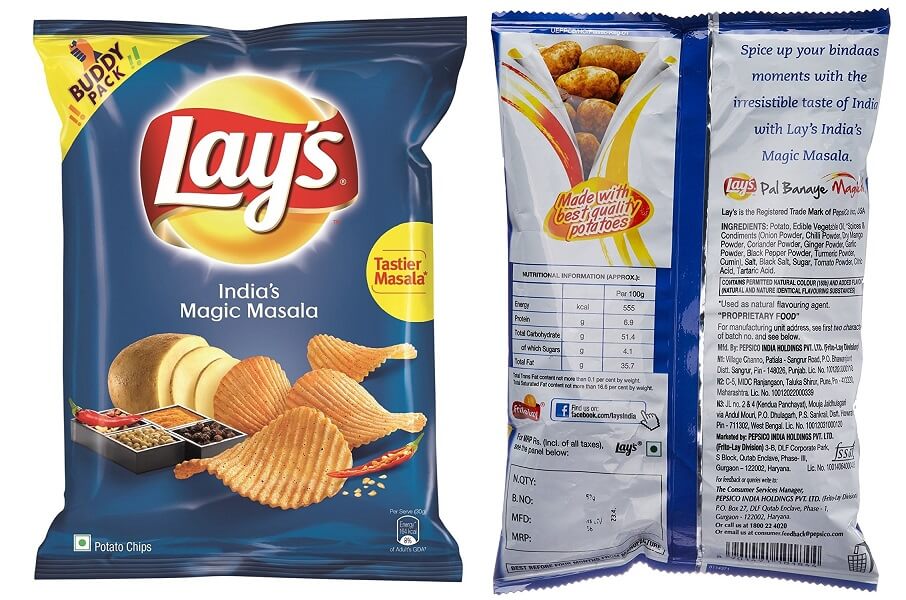
Details on a packet MRP Barcode Date Ingredients
Tropicana is a very famous brand that sells fruit juice worldwide. On January 9th, 2009, the PepsiCo-owned brand decided to replace the existing packaging design for its best-selling orange juice with new packaging for the North American market. However, this new packaging design was rejected and criticized by the majority of Tropicana’s consumers. The launch of the new packaging was indeed such a failure that Tropicana had to drop it to come back to the original version of the packaging. Tropicana’s 2009 packaging redesign failure is an interesting case study about branding through packaging design. Read about it here
Maximum Retail Price
As a consumer, one must be aware of the difference between Maximum Retail Price (M.R.P) and Actual Price of the goods. A maximum retail price (MRP) is a manufacturer calculated price that is the highest price that can be charged for a product sold in India and Bangladesh. All retail products in India must be marked with MRP. Shops cannot charge customers over the MRP. Some shops may charge below MRP to draw more customers to their stores. At shops like Reliance Fresh, Food Bazaar,etc., costs of items are less than the M.R.P, simply because these shops sell it at a lower price. They make up for their profits by volume i.e selling more. In some remote areas, tourist spots, and in situations where a product is difficult to obtain, consumers are often charged illegally over the MRP.
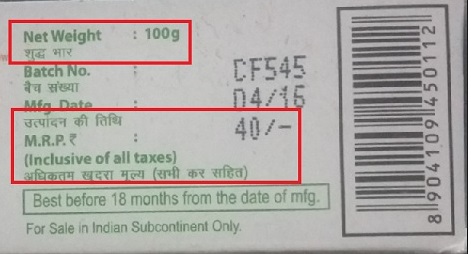
MRP of product on package
Today’s version of MRP was adapted in December 1990. Previous to this date, manufacturer’s had the option of printing the price of their commodities in following two ways. Allegations from consumers and organizations that merchants were over-charging by adding additional local taxes on products brought about the change to MRP in 1990.
- Retail price Rs, local taxes extra
- Maximum retail price Rs, inclusive of all taxes
You should check the MRP on products before purchasing. Some merchants will charge less than the printed price at their discretion. If this happens to me, I make a mental note to return to that shop in the future. And then there are some merchants will try to charge more. If questioned, you may get a response that a newer stock has since come into their store with a revised MRP under which they are selling the old stock.
You should always ask for Bill, which is a proof that you have made the purchase from that particular retailer.
Bar Code on Package
After the shopping one goes to the cashier to pay for what you have bought. You would have noticed the cashier scanning your products using some Laser device to produce a bill. The package has a pattern of wide and narrow bars printed on it. These lines are called barcode. A barcode (also bar code) is an optical, machine-readable, representation of data; the data usually describes something about the object that carries the barcode. What actually he is doing that he is reading the product barcodes using a Laser/Barcode scanner. Barcode scanner reads the code, data is sent to the computer, and the computer looks up into the database for the price and description of the item. Bar-coding is one of the AIDC (Automatic Identification and Data Collection) technologies which reduce human involvement in data entry and collection and thereby also reducing error and time. The video below shows how bar code have helped
A number of barcode standards have evolved over the years. These standards define the details necessary for the barcode to be printed and also provides details to read and decode barcode by a scanner/reader. The standard contains:
- A definition of the width of the bars and the spaces.
- A method to define each character that is encodable (whether numeric only or full ASCII).
- The start and stop characters.
- Any check character support built in.
- Any free space needed around the symbology to allow for a clean decode.
Barcode standards can be either linear or two-dimensional.
- Traditional barcodes represent data by varying the widths and spacings of parallel lines, and are called linear or one-dimensional (1D).
- Later, two-dimensional (2D) variants were developed, using rectangles, dots, hexagons and other geometric patterns, called matrix codes or 2D barcodes, although they do not use bars as such. QR codes, a specific type of 2D barcode, have recently become very popular
Different application requires different barcodes with a capability to hold different data. Therefore, to diverse requirements, GS1 sets standards for use with different types of bar code symbols. GS1 barcodes can be categorized into the various categories. EAN/UPC are the popular barcode standards.
- UPC (Universal Product Code) uses 12-digit numeric containing a unique manufacturer ID number and product number.
- EAN (European Article Numbering) is similar to UPC except the fact that it uses 13-digit numeric. EAN is the most common type of barcode for retail products in India.

UPC EAN bar code standard
GS1 is a not-for-profit, global entity that manages and standardizes barcodes across India. GS1 sets standards and manages the barcode standard used by retailers, manufacturers and suppliers. Approximately two million companies across 20 industries such as Retail & Consumer Packaged Goods, Food, Healthcare, Transport & Logistics (including Customs), Government etc. worldwide are using the GS1 System of standards. More details at GSI can be found here how to get barcode in India.
Ingredients on Packet or Package
Packaged products are convenient, they are fast, they last longer on our shelves and they are designed in a manner to make us want to eat them. But packaged food products are rarely made with real food, offer little nutritional value and many are laden with ingredients made in chemistry labs. Our health has started to suffer, particularly that of children – 1 in 4 children now considered to be overweight or obese and illness like diabetes is on the increase. So one should look at the ingredients and nutritional value an example of which is shown below.
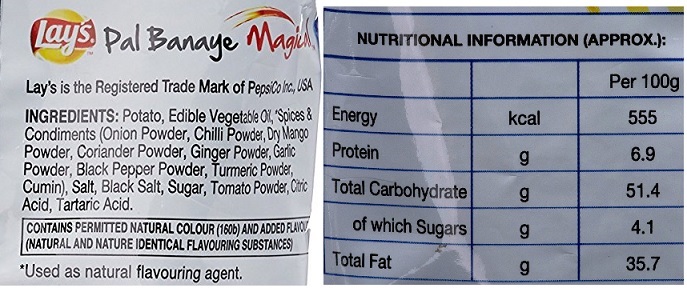
Ingredients Nutritional Information on Packet
Real food is made FROM plants (fruits and vegetables) using nature – soil, sun and water. They have a natural intelligence (eg, fibre, vitamins, minerals, antioxidants, carbs, fats and proteins) that most people are usually able to use without ill effects. Real food also includes grass raised and fed meats – the animals are raised without antibiotics and hormones in paddocks where they are free to roam.
Packet food, on the other hand, is quite different. It is made IN manufacturing plants. There is no natural intelligence – it’s man-made and sometimes designed to mimic the attributes of real food but many are not even designed with this in mind. Packet foods are made IN plants using science and it’s profit that drives their development. A food scientist or food technologists uses scientific research to look at properties and the functions of different ingredients. When developing packet products, 3 main components get added to give them flavour – salt, fat and sugar. Additives and preservatives also get added to products. Some of the purposes are enhancing flavour, texture, moisture, shelf life etc.
A case study of Package and Details on the Product: Patanjali Dant Kanti Toothpaste
Dant Kanti dental cream is a product of Patanjali Ayurved LTD. and is manufactured in India. Baba Ramdev’s Dant Kanti toothpaste is said to be completely a herbal composition and it is useful for dental protection. Patanjali Dant Kanti dental cream is contained in a white plastic tube with white round cap to close the opening. Tthe tube is packed inside the paper carton, like all other toothpaste.
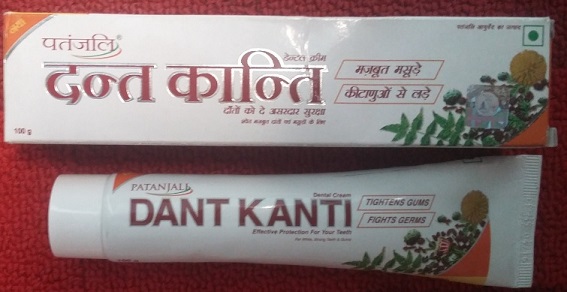
Dant Kanti Package
MRP, Weight

MRP of product on package
Benefits
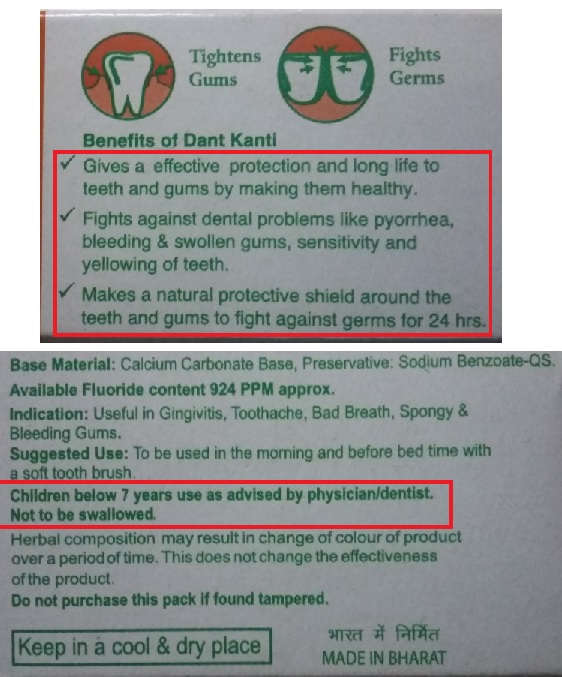
Understand a package benefits
Ingredients

Ingredients of dant kanti
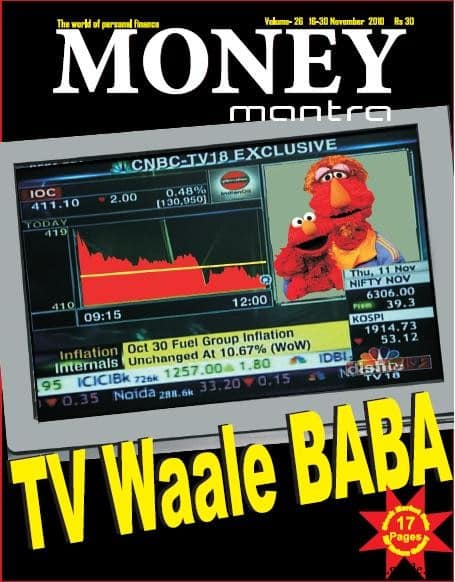




Anyone who needs audit an account or file an income tax return must have a Digital Signature Certificate. Companies who use the DSC must file all reports, applications, and forms, according to the Ministry of Corporate Affairs (MCA). We take care of all of your filing needs and make sure you’re in compliance with the law. GST Return Filing
It’s in reality a great and useful piece of info….I am glad that you shared this useful info with us.
Also check out the link below:-
http://jcsgroup.in/
Thanks for the ideas you are revealing on this website….excellent blog…
We Are Best TradeMark Registration company in india…For more details contact us:-
http://jcscertification.in/
Really helpful article. “talk with money”
How to talk with money…Learn Here